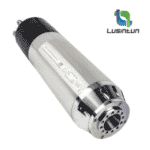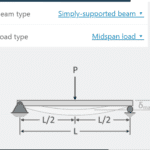Don't worry, We do not spam! By clicking to subscribe, you agree to our privacy policy.
Should you use Roughing End Mills [“Corncob” Roughers] to maximize MRR?
![Should you use Roughing End Mills ["Corncob" Roughers] to maximize MRR? 3 Roughing endmill](https://cncrouterinfo.com/wp-content/uploads/2022/08/roughing_endmill.jpg)
Perhaps you have wondered about some of the benefits for a roughing end mill. A rougher end mill has serrations on its cutting edge; this helps break up the chips, which causes lower pressures on the part. I’ve compiled posts talking about what to expect from each type of roughing end mill, and their advantages.
What are roughing endmills?
Roughing end mills are used to quickly remove large amounts of material. They work by having serrations (very fine teeth) on the flutes. Because of the serrations, they leave a lot of tooling marks on the walls of the cut, so a separate finishing pass with a conventional solid end mill must be made.
Roughing end mills are often called “corncob” roughers, knuckle roughers, hog mills, or ripping cutters.
Why do roughing endmills have teeth?
The serrations ensure chips are broken into short lengths to make evacuation easier at higher chiploads. They can be especially useful in materials like aluminum that tend to generate long stringy chips.
Pro’s and con’s
Roughing end mills leave marks on the workpiece, so you must finish with another set of endmills.
What do they do that standard end mills don’t? A roughing end mill has two strong benefits relative to regular end mills.
First, they often seem to reduce chatter. A way to prevent this is by changing the end mill and serration configuration on the teeth. You should also read our Feeds and Speeds Cookbook chapter about chatter.
A roughing end mill has two advantages. These mills can chop up the chips better, which leads to less jamming and a lighter chip load.
I went through offerings from 10 different endmill manufacturers and I found out that roughers are given a chip load multiplier on corncob versus the closest equivalent finishing endmill for aluminum and steel.
The results of this competition were impressive, and ranged from a minimum of 1 to 2.75 at the top end. The average was 1.48 and the median was 1.23. When performing these types of statistical analyses, I utilize a model that ensures there are no outliers and I arrive at a more accurate measurement than a simple average. It’s proprietary so I won’t go into it, but when all was said and done, I increased the G-Wizard bonus for these tools from 20% to 38%.
Chips are cleared more efficiently by deep slotting. Chips also rarely deflect, which can lessen pressure on cutting when they do.
Pitch is a measurement of the distance between the teeth on your end mill. Typically, fine pitch end mills are used for high temperature metals such as titanium alloys and stainless steel because they spread their cutting pressure over more teeth. This makes them last longer. Fine pitch also results in better finishes with non-ferrous materials and softer steels. Coarser pitches are typically used with metals that are lower than a certain hardness, like bronze, brass and aluminum.
With a cylindrical-grind, it is easy to sharpen the corncob rougher and keep it in good condition. Resharpening tools can save you money.
![Should you use Roughing End Mills ["Corncob" Roughers] to maximize MRR? 1](http://ae01.alicdn.com/kf/Hd7fdd01c16f449e08fbf25fb7f72a1d0z.jpg_350x350.jpg)
Dreanique – Solid Carbide 4 flute CNC roughing end mill
Make sure you don’t miss any posts. Get an weekly update of new posts. Subscribe now
Conclusion
Is it worth changing over to this new style cutter? You be the judge, but I like using this cutter. It gives a 38% increase in material removal rates, which is what we want in the industry.







